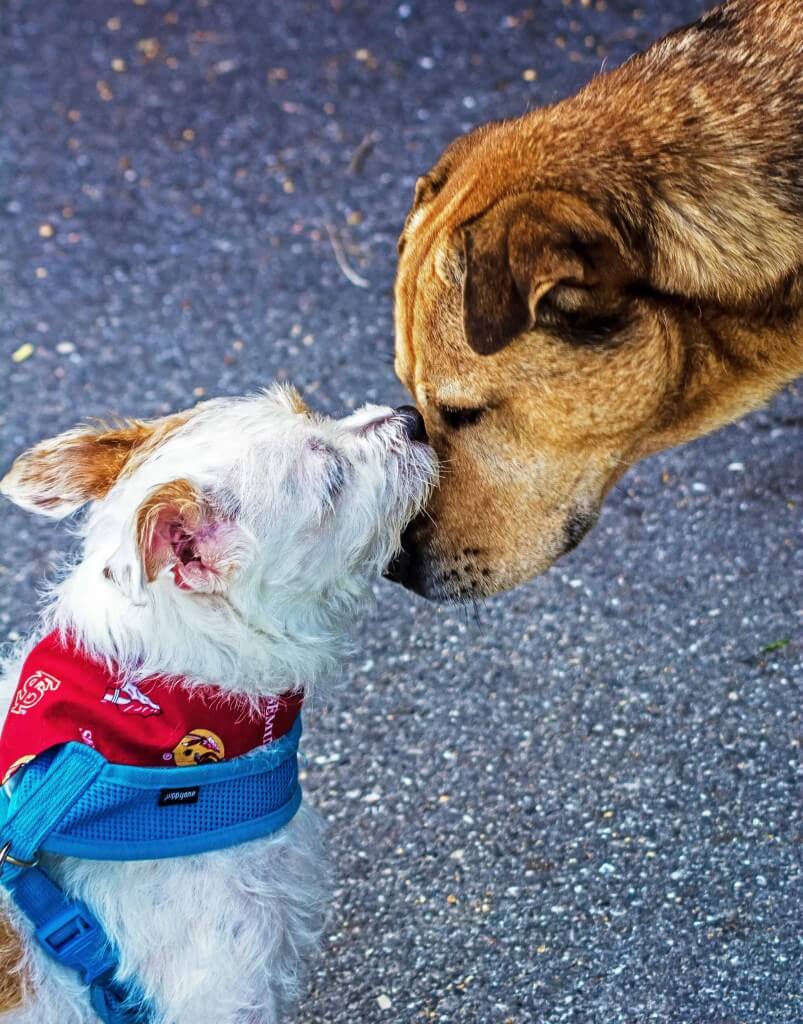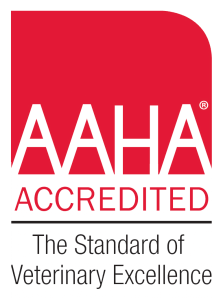Wisconsinites can be divided into two groups of people when it comes to winter; many of us dread the snow, ice, and frigid temperatures, while others can’t wait to frolic in the fresh powder or bundle up for some sledding. While we will likely always remain split down the middle on that debate, one thing we all can agree on is that there is nothing worse than
As humans, we’re fortunate that our flu season is generally limited to the winter months. Our canine friends, however, are not so lucky. Canine Influenza (or dog flu) is a highly contagious disease that is a threat all year round.
What is Dog Flu, and Where Did It Come From?
There are two identified strains of the canine influenza virus. They are classified as H3N8 and H3N2. The first recognized outbreak involved the H3N8 strain of Canine Influenza and occurred in January 2004 at a greyhound race track in Florida. This virus mutated from an equine (horse) strain of the virus and was able to affect dogs. The first cases involved dogs in the racing industry and shelters. Since then, it has been reported cases in nearly all 50 states in the U.S. and continues to mainly affect dogs in shelter/rescue settings periodically across the country.
The most recent strain of flu to affect dogs is The H3N2 strain. This virus was first identified in Asia in 2006 and affected initially only birds. There is no evidence to confirm this, but it is suspected that in 2015 the H3N2 strain was introduced to the United States by dogs that were rescued and imported from Asia. This U.S. introduction occurred just over our southern border in . It started when a handful of dogs at a boarding facility became ill. Despite attempts to control the virus by closing and disinfecting the facilities, the virus spread rapidly in the dog community. Over six months, there were upwards of 1,000 cases of the infectious respiratory disease reported in dogs. From the Chicago area, the H3N2 virus spread through the Midwest and, ultimately, throughout the country. See a www.DogFlu.com.

Do I Need to Worry About Dog Flu?
Canine Influenza is transmitted from dog to dog by respiratory secretions (i.e., coughing, sneezing, and barking). The virus can live on surfaces for up to 48 hours so that dogs can pick up the virus from kennel surfaces, water, and food bowls, collars, leashes, etc. The virus can live on clothing for 24 hours and human hands for 12 hours, so people can also carry the virus from infected dogs to uninfected dogs. All dogs are susceptible to the virus at any time, but dogs in restricted spaces (like shelters, boarding kennels, daycare facilities, etc.) are at a much higher risk.
The canine flu virus is HIGHLY contagious; virtually 100% of exposed dogs will become infected. Of the infected dogs, 80% will show clinical signs to some degree while 20% of infected dogs show no clinical signs; but they continue to shed the virus. This is why infection rates are so high; owners can not be assured their pets will remain unexposed by just avoiding only the clinically affected dogs.
You should also know, there has never been a case of a human becoming infected with canine Influenza, and there is no evidence it can spread to humans. The H3N2 strain has been shown, however, that it can be spread from infected dogs to cats.

Symptoms of Dog Flu
Dogs infected with the virus will show symptoms starting approximately two to three days after being exposed. They will generally have a cough that can sound either like a moist, soft cough or a dry hacking cough. The cough will typically persist for anywhere from 10 to 21 days. The cough can be accompanied by discharge from the eyes and nose as well as sneezing, lethargy, inactivity, decrease in appetite, and fever. Dogs with weaker immune systems (young puppies, geriatric dogs, or dogs with pre-existing heart or lung disease or other complicated medical histories) can be more severely affected and present with symptoms of pneumonia (high-grade fever, increased respiratory rate and labored breathing).
Because the symptoms of canine Influenza are the same as many other respiratory infections, it cannot be diagnosed on symptoms alone. All dogs showing respiratory symptoms should be isolated until examined by a veterinarian. Specific viral screening tests can be performed to confirm the diagnosis.
Because the cough can persist for up to 21 days, a 21-day quarantine is recommended for infected dogs. The quarantine means they cannot return to Doggy Day Care until their cough has resolved entirely.
How are dogs treated?
As with all viral infections, there is no specific treatment. Treatment is based on providing supportive care; it generally involves fluids to maintain hydration, anti-inflammatory medications for fever reduction and discomfort, antibiotics for any suspected secondary bacterial infections as well as providing nutritional supplementation. These are done to support the dog’s health until the virus is fought off by the body’s immune system.
Should You Vaccinate Against Canine Flu?
Now that both strains have been identified in the U.S. and the occurrence of one strain or the other is unpredictable, it is recommended that high-risk dogs should be protected against both strains of the virus.
The first canine influenza vaccine was introduced in June of 2009 to aid in controlling infection with canine influenza virus H3N8 since that was the only strain found in the United States at that time. In 2015, following the Chicago epidemic, an H3N2 vaccine was released. We now have a safe and effective vaccine to aid in the control of infection with both strains of the canine flu virus. Healthy dogs seven weeks of age or older can be given the vaccine. It requires two vaccinations given two-to-four weeks apart. Initial studies have shown that dogs do not maintain the long duration of immunity, so it is essential to revaccinate them annually.
As an informed Pet parent, you need to know that vaccinated dogs CAN still become infected and develop a respiratory illness. The purpose of the vaccination is to control the spread of the disease by reducing the severity and duration of illness and symptoms, reduce the amount of virus that is shed by infected dogs and how long they shed the virus.
We feel that dogs at the highest risk of exposure and those that should receive the vaccination, include all social dogs; those that board, go to doggy daycare, are groomed, go to training classes or travel, go to parks, fairs, athletic events, etc.
Additionally, if you use the services of a boarding, grooming, or doggy daycare facility for your dog, you need to be your pet’s health advocate and do your due diligence. Concerning these facilities, you need to investigate these facilities to ensure they follow a strict cleaning regiment and schedule, are using proper disinfecting products, and that all personnel is appropriately trained to understand and how to prevent it. Lastly, a facility that requires all dogs to be vaccinated before entering their facility will go a long way to helping protect your dog.
Features of our New Luxury Pet Resort and Doggy Care Facility that Reduce Risk of Disease Spread – Keep Pets Healthier

Our brand-new Luxury Pet Resort and Doggy Day Care facility is designed to limit the spread of diseases, just like canine flu. It offers the latest in air purification systems. Ductwork throughout the building contains germicidal ultraviolet units eliminating 99% of all bacteria, viruses, and molds, meaning a safer, healthier environment of all. Additionally, air quality is a top priority, with all the air in each room being changed out ten times per hour (each change bringing in 50% fresh air), thus eliminating stagnant air and all odors as well as reducing humidity and risk of mold formation. Our facility is headed by manager Holly Bennett, a Certified Veterinary Technician, Holly understands the importance of cleanliness and has set high standards for her team regarding the sanitation of the facility. They utilize a high-pressure washing system in combination with pet safe in antimicrobial disinfectant. She also has a wealth of medical experience, allowing us to identify early signs of illness and can institute isolation/containment procedures quickly and can get medical and diagnostic testing performed through our adjacent veterinary facility.
For your pet to stay as a guest in our new Luxury Pet Resort, to participate in Enrichment Doggy Day Care or any of the training classes, your dog will need to receive this vaccination. We want all our guests to be safe and stay healthy while they have fun and enjoy our facility.
If you still have questions about dog flu, are uncertain if your dog is at risk or wonder if the vaccination is needed/appropriate for your canine friend, please have a conversation with one of our veterinarians or team members. They will help you decide the best way to protect your best friend!
About Brook-Falls
Brook-Falls Veterinary Hospital and Exotic Care is dedicated to providing quality care to all companion pets and exotic animals. Brook-Falls is a Menomonee Falls, WI-based full-service veterinary hospital with an extensive range of comprehensive medical, dental, diagnostic, and surgical services to meet the varying needs of all patients. Brook-Falls Veterinary also offers informational and educational media and seminars for pet owners by way of blogs, digital TV series (Expert Veterinary Television), e-books, whitepapers, infographics, and more.
For more information, contact Brook-Falls Veterinary Hospital & Exotic Care, Inc.


